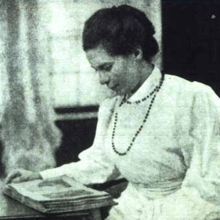Nivedita Setu
| Nivedita Setu নিবেদিতা সেতু | |
|---|---|
 Nivedita Setu | |
| Coordinates | 22°39′08″N 88°21′12″E / 22.652286°N 88.353258°E |
| Crosses | Hooghly River |
| Locale | Bally-Dakshineswar, Kolkata |
| Characteristics | |
| Total length | 880 metres (2,890 ft) |
| Width | 29 metres (95 ft) |
| Number of spans | 7 |
| History | |
| Construction begin | April 2004 |
| Opened | July 2007 |
Nivedita Setu (also called Second Vivekananda Setu) is a cable-stayed bridge over Hooghly River in Kolkata, West Bengal. It runs parallel to and around 50 m downstream of the old Vivekananda Setu opened in 1932. The bridge is named after Sister Nivedita, the social worker-disciple of Swami Vivekananda. Belghoria Expressway that connects the meeting point of NH 2 with NH 6 at Dankuni to NH 34, NH 35, Dum Dum Airport and northern parts of Kolkata passes over the bridge. The bridge is designed to carry 48,000 vehicles per day.[1][2]
Technological wonder

Vivekananda Setu had become weak as a result of ageing and with heavy traffic even repairs became difficult. There was need for a second bridge.[2]
The main challenge was to design and construct a new bridge that did not mar the view of the old Vivekananda Setu, did not dwarf the historically important Dakshineswar Kali Temple which is located well within visible distance, and carry substantially higher levels of fast traffic for around half a century.[3]
The bridge rests on deep-well foundations going down to the river bed level. It carries six lanes for high speed traffic. The carriageway is supported by 254 pre-stressed concrete girders. Cables from 14m high pylons extend additional support.[3]
Nivedita Setu is the first bridge in the country that is a single profile cable-stayed bridge. By design, the height of the columns are lower than the tip of the Dakshineswar temple.[3]
Construction
This "wonder of an architecture" bridge is estimated to cost approximately Rs. 6,50 crore. The construction of the bridge started in April 2004, by the construction giant Larsen and Toubro and was opened to traffic in a record time in July 2007.
The bridge is the India's first multi-span, single-plane cable supported extra-dosed bridge; with short pylons and seven continuous spans of 110 m, totaling a length of 880 m (2,887 feet). It is 29 m wide and will be able to support 6 lanes of traffic.[2][3]
Award
Nivedita Setu has won an Award of Excellence from the American Segmental Bridge Institute, USA.[4]
Toll
As of 2011, the toll charges for using Nivedita Setu are: Rs. 42 for light passenger vehicles, Rs. 65 for buses, Rs. 99-Rs. 183 for trucks and multi-axle vehicles.[5]
See also
References
- ↑ "Second Ganga bridge running below capacity". Business Standard, 7 July 2008. Retrieved 2011-07-06.
- 1 2 3 "Famous Bridges of India – Nivedita Setu". India Travel News. Retrieved 2011-07-06.
- 1 2 3 4 "Second Vivekananda Bridge is a technological wonder". Tarak Banerjee. Retrieved 2011-07-06.
- ↑ "Nivedita Setu bags award". The Hindu Business Line, 31 July 2008. Retrieved 2011-07-06.
- ↑ "The City Diary". The Telegraph, 4 July 2011. Retrieved 2011-07-06.
External links
| Wikimedia Commons has media related to Nivedita Setu. |
